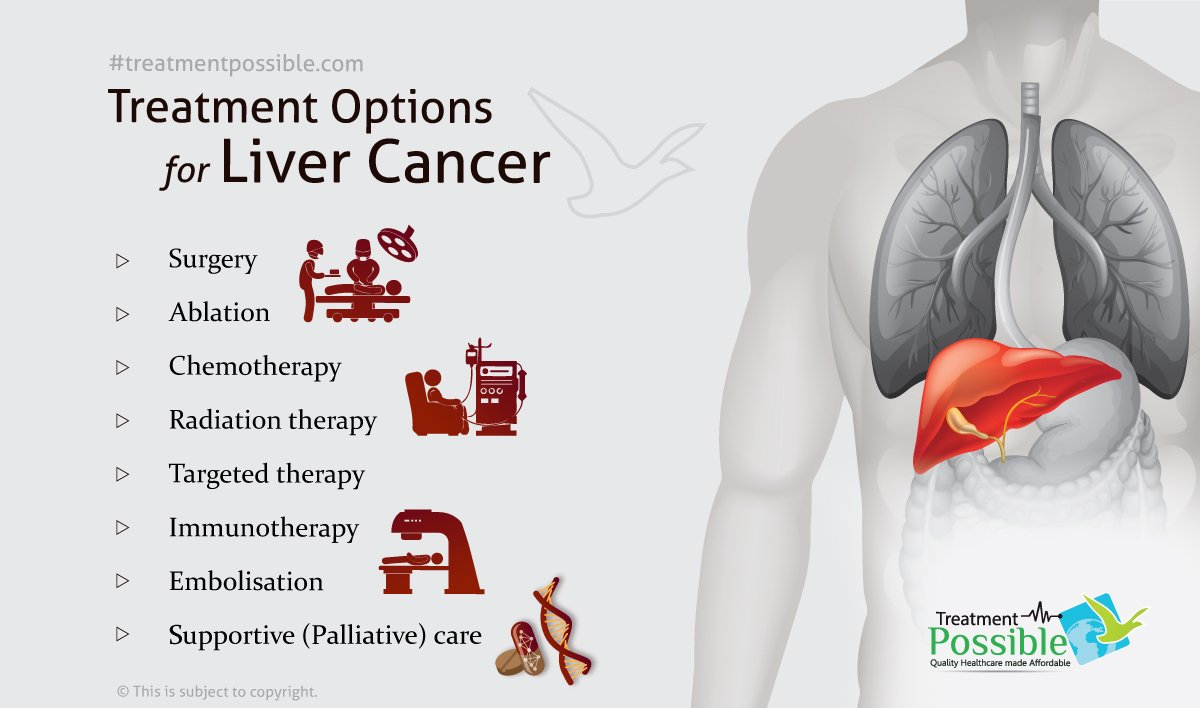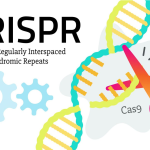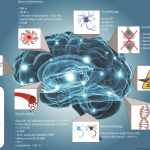When it comes to liver cancer treatment, groundbreaking research highlights the intricate relationship between bile acid metabolism and hepatocellular carcinoma (HCC), the leading form of liver cancer. New findings indicate that the regulation of bile acids, which play a crucial role in digesting fats, is directly linked to liver diseases. A pivotal molecular switch has been identified that could pave the way for innovative therapeutic interventions targeting liver cancer. Understanding the underlying mechanisms, including the YAP pathway’s influence on bile acid functions, is essential for developing effective treatment strategies. As we deepen our knowledge of liver disease and its interconnections with metabolic processes, the prospect of targeted liver cancer treatment becomes increasingly promising.
Liver malignancy therapy is an evolving field where recent discoveries have shed light on the significance of bile management in relation to liver disorders. The connection between bile acid function and hepatocellular carcinoma presents a unique approach to addressing this serious health issue. Researchers are now focusing on the critical signaling pathways involved in liver physiology, particularly how the YAP pathway impacts liver health and disease progression. Enhanced understanding of these mechanisms may lead to novel therapies that not only treat existing liver cancer but also prevent further liver complications. By exploring alternative treatment modalities through the lens of bile acid dynamics, the future of liver cancer management looks brighter.
Understanding Bile Acid Metabolism in Liver Health
Bile acid metabolism plays a crucial role in maintaining liver health and overall metabolic homeostasis. The liver produces bile acids from cholesterol, which are essential for the digestion and absorption of dietary fats. These bile acids not only aid in fat digestion but also act as signaling molecules that regulate various metabolic processes in the body. Disruptions in bile acid metabolism can lead to liver diseases, including liver fibrosis and hepatocellular carcinoma (HCC), indicating the importance of maintaining a balanced bile composition.
Recent studies have uncovered the intricate relationship between bile acid metabolism and liver diseases, emphasizing the need for a deeper understanding of this process. By identifying key factors that regulate bile acid synthesis and secretion, researchers can develop potential therapeutic interventions for liver diseases. This investigation into bile acid metabolism not only highlights its essential functions but also underscores the impact of dysregulation on liver health and disease progression.
Liver Cancer Treatment: Targeting the YAP Pathway
The YAP (Yes-associated protein) pathway has emerged as a promising target in the fight against liver cancer. Recent findings have shown that YAP plays a significant role in regulating bile acid metabolism, directly linking this pathway to liver cancer progression. Traditionally known for its role in promoting cell growth and proliferation, YAP also functions as a repressor in bile acid signaling, particularly through its interaction with the FXR receptor. This revolutionary understanding opens new doors for targeted liver cancer treatment options that modulate this pathway.
Strategies to inhibit YAP’s repressive activity are being explored as potential liver cancer treatments. Enhancing FXR function or promoting bile acid excretion may alleviate the damaging effects caused by overproduction of bile acids, which can contribute to liver inflammation and fibrosis. By identifying pharmaceutical compounds that can activate FXR or inhibit YAP, researchers hope to develop effective treatments that address the underlying metabolic imbalances associated with liver cancer.
The Role of FXR Function in Liver Disease
Farnesoid X receptor (FXR) is a nuclear receptor that plays a vital role in maintaining bile acid homeostasis and regulating liver metabolism. Its function is critical in controlling the balance of bile acids, preventing their excessive accumulation, which can lead to liver injury and diseases such as hepatocellular carcinoma (HCC). Understanding the role of FXR in liver disease has become a focal point for researchers aiming to develop novel therapeutic strategies for those affected by various liver conditions.
Activating FXR signals can restore balance in bile acid levels, thereby reducing inflammation and fibrosis in the liver. This signaling pathway not only protects against liver disease but also has implications for broader metabolic processes. By targeting FXR as a primary mechanism to correct metabolic dysfunction and reduce liver cancer risk, researchers can significantly impact treatment outcomes and improve liver health for patients suffering from liver disease.
Exploring the Hippo Pathway’s Impact on Liver Cancer
The Hippo signaling pathway is critical in regulating organ size and tissue homeostasis, particularly within the liver. Recent research has shed light on how dysregulation within this pathway, particularly involving YAP, contributes to pathological conditions such as hepatocellular carcinoma (HCC). When YAP is overactivated, it can disrupt normal bile acid metabolism and promote tumor growth. Understanding this relationship provides valuable insights for developing innovative liver cancer treatments that target the Hippo pathway.
By focusing on the Hippo pathway, researchers are not only examining its role in liver cancer but also its influence on other metabolic diseases. The intricate network linking cell signaling, metabolic balance, and cancer progression suggests that therapeutic interventions targeting YAP and related pathways could provide innovative solutions for treating liver diseases. Continued exploration of this signaling cascade will be essential for advancing liver cancer treatments and improving patient outcomes.
The Connection Between Liver Disease and Bile Imbalance
Liver disease encompasses a variety of conditions, including cirrhosis, hepatitis, and liver cancer, all of which can be exacerbated by bile acid imbalances. Bile acids, while essential for digestion, can be toxic in excessive amounts, leading to liver inflammation and disease progression. Understanding how bile imbalance triggers specific pathways like the YAP and FXR can help clarify the relationship between liver health and disease states.
By identifying the molecular mechanisms driving bile acid metabolism and their connection to liver disease, researchers can develop effective strategies to restore balance within the liver. These approaches may include lifestyle changes, pharmaceutical interventions, and novel therapeutic targets aimed at correcting bile imbalances, thereby reducing the risk of liver disease progression and improving overall liver function.
Innovative Research in Hepatocellular Carcinoma Treatment
As the most common form of liver cancer, hepatocellular carcinoma (HCC) poses significant treatment challenges. Recent advancements in understanding the underlying mechanisms of HCC have catalyzed research into targeted therapies aimed at disrupting tumor growth. By focusing on the molecular pathways involved in bile acid metabolism and the roles of YAP and FXR, researchers are uncovering promising new avenues for HCC treatment.
Clinical tests assessing the efficacy of medications that activate FXR or inhibit YAP are underway, showcasing hope for patients with advanced liver cancer. These innovative approaches, rooted in biochemical and metabolic pathways, reflect a shift toward personalized medicine in treating HCC, potentially allowing for more effective and less toxic treatment options.
Pharmacological Solutions for Liver Health
The pursuit of pharmacological solutions targeting liver function has become increasingly urgent as liver diseases rise globally. Researchers are exploring compounds that can enhance FXR function, thereby restoring bile acid metabolism and preventing liver injury. This approach not only aims to treat existing liver diseases but also serves as a proactive measure against potential liver cancer development.
By harnessing the power of pharmacology to modulate metabolic processes within the liver, scientists aim to create therapies that are not only effective but also have fewer side effects. Investigating the interactions between bile acids, YAP, and FXR will prove essential as researchers strive to develop innovative solutions for improving liver health and combatting liver disease.
The Importance of Interdisciplinary Research in Liver Cancer
Interdisciplinary research is crucial in advancing our understanding of liver cancer and the pathways involved in its progression. Collaboration among molecular biologists, clinicians, and pharmacologists can yield new insights into the mechanisms underlying bile acid metabolism and liver disease. Such collaborative efforts are pivotal in creating a comprehensive research framework that can lead to effective treatments for hepatocellular carcinoma (HCC) and other liver conditions.
By combining expertise from various disciplines, researchers can address complex challenges associated with liver cancer, focusing on innovative strategies that consider the interplay of genetics, metabolism, and environmental factors. As investigations continue, this integrative approach is expected to revolutionize our understanding of liver cancer treatment, ultimately improving patient care and health outcomes.
Future Directions in Liver Disease Research
The future of liver disease research is promising, with ongoing studies exploring novel therapeutic approaches to combat liver conditions, especially hepatocellular carcinoma (HCC). As understanding of bile acid metabolism and its link to liver health grows, targeted interventions aimed at disrupting disease pathways will become increasingly vital. Advancements in technology and molecular diagnosis also provide opportunities to identify individuals at risk before significant liver damage occurs.
Continued investment in research focusing on the roles of YAP and FXR will help unravel the complexities of liver disease and cancer. Collaborations between academic institutions, pharmaceutical companies, and healthcare providers will foster innovation and accelerate the development of effective treatments for liver diseases and improve prognosis for affected patients.
Frequently Asked Questions
What are the main liver cancer treatment options available?
Liver cancer treatment options primarily include surgical approaches, such as partial hepatectomy and liver transplantation, as well as non-surgical methods like ablation therapies, transarterial chemoembolization (TACE), and systemic therapies. Targeted therapies and immunotherapies are also being explored, particularly for hepatocellular carcinoma (HCC), the most common form of liver cancer.
How does bile acid metabolism affect liver cancer treatment outcomes?
Bile acid metabolism plays a crucial role in liver health and disease. Disruption in bile acid balance may lead to liver inflammation and contribute to the development of hepatocellular carcinoma (HCC). Understanding and targeting bile acid metabolism can enhance liver cancer treatment by restoring balance and potentially improving patient outcomes.
What role does the YAP pathway play in liver cancer treatment strategies?
The YAP pathway is critical in regulating cell growth and is involved in liver cancer progression. Research indicates that inhibiting YAP can induce tumor suppression, making it a target for liver cancer treatment. By enhancing pathways that counteract YAP’s repressive actions, such as the FXR function, therapies could more effectively control hepatocellular carcinoma development.
What is the significance of FXR function in liver cancer therapy?
FXR (Farnesoid X receptor) function is vital for maintaining bile acid homeostasis. In liver cancer treatment, enhancing FXR activity can help regulate bile acid levels, reduce liver inflammation, and inhibit tumor progression. Drugs that stimulate FXR may represent an innovative approach to treating hepatocellular carcinoma and other liver diseases.
Are there any experimental treatments related to bile acid metabolism for liver cancer?
Yes, experimental treatments are being developed that focus on bile acid metabolism to treat liver cancer. By targeting the YAP pathway and enhancing FXR function, researchers aim to develop pharmacological interventions that restore bile acid balance and reduce inflammation and fibrosis, ultimately impacting the progression of hepatocellular carcinoma.
Can lifestyle changes impact liver cancer treatment effectiveness?
Yes, lifestyle changes can significantly influence liver cancer treatment effectiveness. Maintaining a healthy weight, avoiding alcohol, and managing metabolic conditions may improve liver health and enhance the efficacy of liver cancer treatments. It is essential for patients to discuss lifestyle modifications with their healthcare providers to optimize their treatment plans.
What are the latest advancements in liver cancer treatment research?
Recent advancements in liver cancer treatment research include the identification of molecular switches in bile acid metabolism and the exploration of the YAP pathway’s role in tumor formation. These findings could lead to innovative therapies that target metabolic controls, aiming to improve treatment effectiveness for hepatocellular carcinoma.
| Key Points | Details |
|---|---|
| Bile Imbalance | An imbalance in bile acids, produced by the liver, is linked to liver diseases, particularly hepatocellular carcinoma (HCC). |
| Key Molecular Switch | A study identifies a molecular switch that regulates bile acid metabolism, providing insights for liver cancer treatment. |
| YAP Function | YAP, a protein involved in cell signaling, interferes with bile acid regulation by paralyzing FXR, leading to liver damage and cancer progression. |
| Potential Treatment | Research suggests that enhancing FXR function or promoting bile acid excretion may block cancer progression. |
| Research Support | The Yang Laboratory’s work is funded by the National Institutes of Health and aims to understand liver biology and cancer mechanisms. |
Summary
Liver cancer treatment has gained new insights due to recent discoveries about bile acid metabolism. The identification of the YAP protein’s role in regulating bile acids presents new avenues for potential therapeutic interventions. By targeting the molecular pathways involved, researchers hope to develop effective strategies to manage and treat liver cancer, enhancing patient outcomes.










